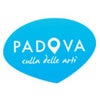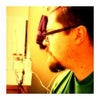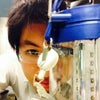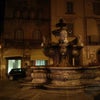The Scrovegni Chapel, or Cappella degli Scrovegni, also known as the Arena Chapel is a church in Padua, Veneto, Italy. It contains a fresco cycle by Giotto, completed about 1305, that is one of the most important masterpieces of Western art. The church was dedicated to Santa Maria della Carità at the Feast of the Annunciation, 1305. Giotto's fresco cycle focuses on the life of the Virgin and celebrates her role in human salvation. The chapel is also known as the Arena Chapel because it was built on land purchased by Enrico Scrovegni that abutted the site of a Roman arena. This space is where an open-air procession and sacred representation of the Annunciation to the Virgin had been played out for a generation before the chapel was built. A motet by Marchetto da Padova appears to have been composed for the dedication on March 25, 1305.
The wealthy moneylender Enrico Scrovegni had the private chapel built directly next to the family palazzo on his large estate. He commissioned its decoration by Giotto, Italy's preeminent painter of the time. It is often suggested that Enrico built the chapel in penitence for his father's sins. Enrico's father Reginaldo degli Scrovegni is the usurer encountered by Dante in the Seventh Circle of Hell. But a recent study provides extensive evidence that Enrico himself was involved in usurious practices and that the chapel was intended as restitution for his own sins.. Enrico's tomb is in the apse, and he is also portrayed in the Last Judgment presenting a model of the chapel to the Virgin.
Though the chapel was ostensibly a family oratory, it served some public functions related to the Feast of the Annunciation,
Apart from Giotto's work, the chapel is unornamented and features a barrel vault roof. Giotto's Last Judgment covers the entire wall above the chapel's entrance and includes the aforementioned devotional portrait of Enrico. Each wall is arranged in three tiers of fresco groups, each with four two-meter-square scenes. Facing the altar the sequence begins at the top of the right hand wall with scenes from the life of the Virgin, including the annunciation of her mother and the presentation at the temple. The series continues through the Nativity, the Passion of Jesus, the Resurrection, and the Pentecost. The panels are noted for their emotional intensity, sculptural figures, and naturalistic space. Between the main scenes Giotto used a faux architectural scheme of painted marble decorations and small recesses. , one of the panels in the Scrovegni Chapel]]
The iconography of the fresco are those of the Life of Christ and the Life of the Virgin. The Annunciation occupies a central position over the chancel arch.





